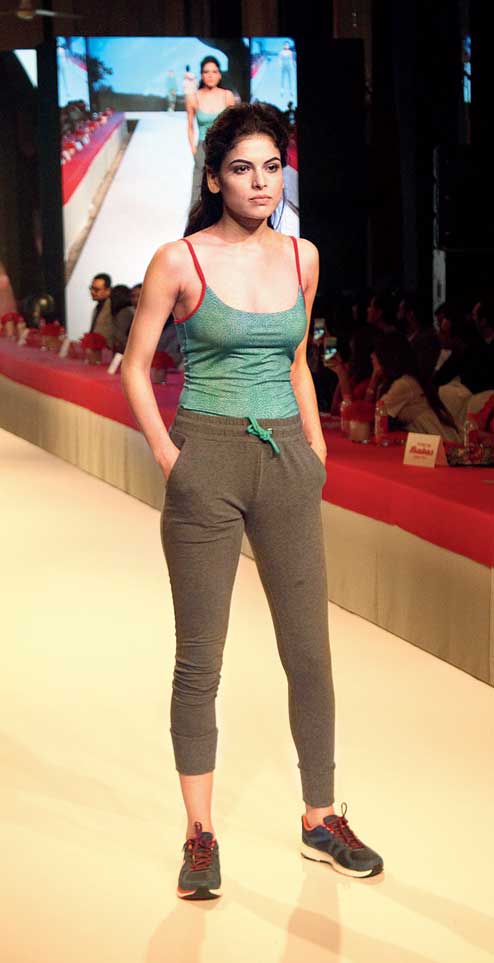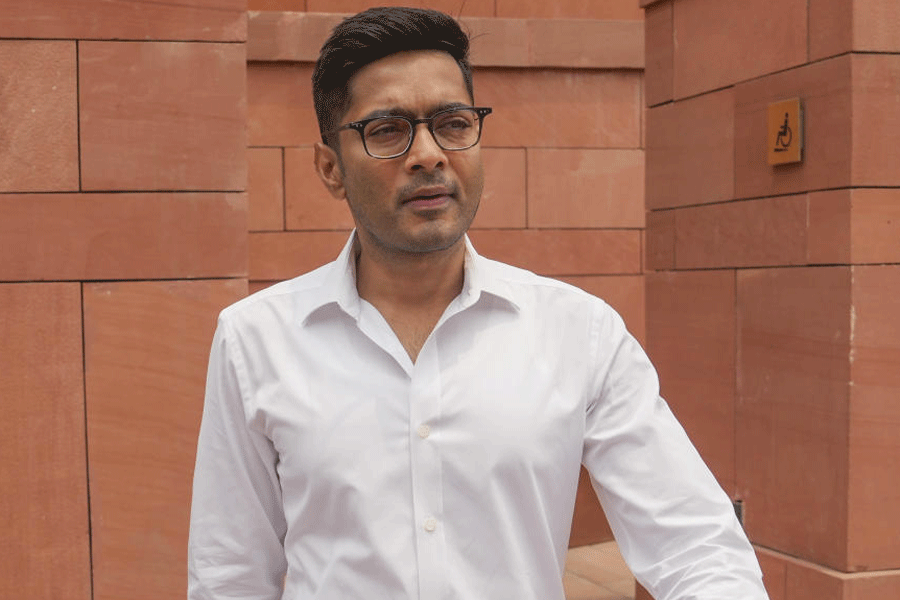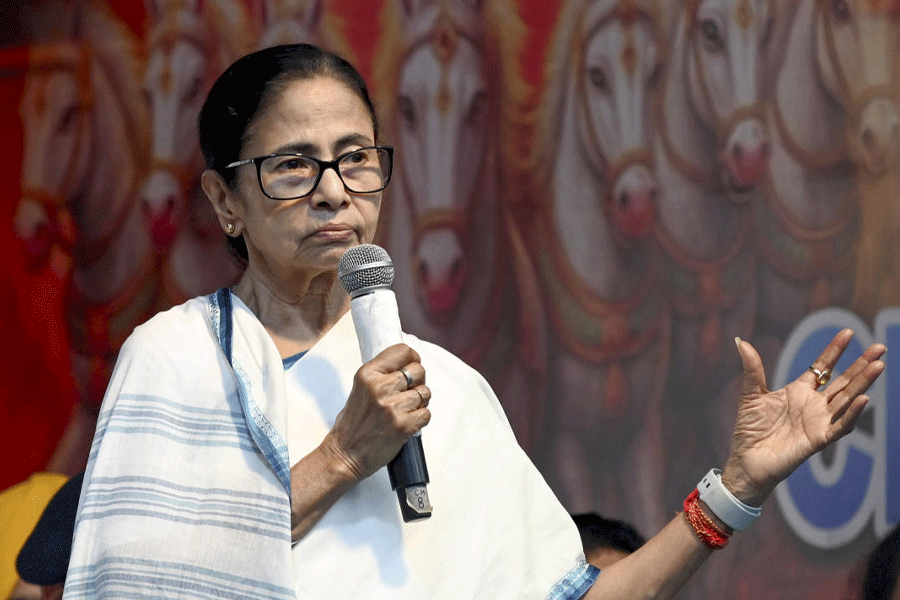Wearing a shirt and Nehru jacket and a broad smile, Thomas Archer Bata, global chief marketing officer of Bata, chatted with t2 after a fashion show displaying the latest collection of footwear from the 123-year-old brand.
1894 to 2017 — it has been one long journey. What do you think has worked?
Oh, it’s really been one long journey! (Laughs) Longer than I have been alive… I think it has been defined by consistency in terms of knowing customers and building trust with them. And I think Indian consumers feel that we have been consistent over time, the quality is good and the company is very honest. These are deep values… this is a family business and these are things we want to keep and continue offering. Our business is over 80 years old in India and it has changed over the years…
What is India’s contribution to the growth of the brand globally?
India is the no. 2 market for us in terms of revenue. Looking into the future, it will be a very important market for us.
And Bengal?
I guess in the 1930s when they set up at Batanagar, Calcutta was clearly the political centre in India with good trade links and I think that was the main criterion for setting it up there. We stayed there and felt the best thing was to expand manufacturing. We have a loyal and dedicated workforce, a big community that’s going around the factory and Batanagar is quite a big city now actually! So we have a very close relationship…. In terms of revenue, Bengal’s contribution is quite big, it’s 15 per cent.
Is Batanagar the main Bata plant?
It is for most of the Indian market. We sell around 220 million pairs of shoes globally and we make around 30 million in Bengal. We have three factories in India and the biggest is Batanagar.
Where is the main manufacturing unit in the world?
Umm, there isn’t a single one because no country makes more than the quarter of the shoes. India is the biggest; then we have another 10 countries like Bangladesh, Pakistan, Indonesia, South Africa, Columbia, Mexico… it’s very diverse.
What makes Bata products unique according to you?
There are several elements to that. First, the designs we make are unique, the designs are made from scratch and made at our factories… so there is a consistency, which you might not find in other companies where they are changing their suppliers often.
The other thing is we can give great value because we control the whole supply chain. Many brands have two or three middlemen from the time the shoes are made to the time they are sold, which pushes up the price. We go straight from the factory to the consumer, which means we can work on a lot of margins and give better value than anybody else.
Have you been to Calcutta?
Yes, I have been to Calcutta and Batanagar!
What is the first thing that comes to mind when you think of Calcutta?
Our shoe factory (laughs)! The thing that impressed me about Calcutta is the beautiful heritage. The old part of the city is absolutely beautiful. I had gone around in a rickshaw, the hand-pulled ones, and it was quite scary! (Laughs) And I had visited all the touristy sites.
But I have seen a lot of change in the city in the last five-six years. There is a lot of construction everywhere, modernisation... the roads are improving, so we are very happy about that. It is good for us since we have good investments and a big factory, so for that we need better infrastructure and it will help us encourage and invest more.

The shoe-stoppers: Bata celebrated its 123 years with a fashion show on May 29 at The Imperial, New Delhi, that showcased six fresh collections — Bata Comfit and North Star, the two casual urban youth ranges; the sporty Power range; Pata Pata’s ‘Masala Collection’; Insolia range and the stylish men’s European Collection.


Bangaliana and Bata are synonymous for Bengalis...
We are so proud to know there is such a close relationship. See, the business strategy has to be very close to the local market... have local people working in the factory and have common values. So the factory standards remain the same, whether you are in India or France. This created a huge amount of loyalty for the employees too because they knew that working for Bata is a good job. They are consistent and they have good prospects, so we are really very happy to see that relationship going on for 80 years.
I guess it is because so many people have used the shoes in Bengal! And of course grown up with it because they were made here.

What is the main strategy of Bata as a brand?
To offer shoes that our consumers need and want and shoes that last! Shoes are fashion items at the end of the day and they have to be trendy. We are never going to be at the forefront of fashion, neither do we want to be there. Our consumers want to be trendy…. We want to have some icons which last forever, like the Bata Tennis shoes that’s been there for 80 years and the product is great.
Now we are doing some collaboration. We did some one with Comme des Garcons. Then with Peanuts the cartoon! These are available at our limited stores in India, and internationally. Every few months, we are coming up with something new depending on what we think would help build the brand even better.
Internationally, what are the top trends?
There’s a lot of them, actually. There is the colour trend... there’s a lot of green coming in! Military green in selling very well in Europe and it is coming to India in the next few weeks. The whole idea of natural colours is definitely there and we have seen those already in Europe. In terms of cuts, a lot of mule and boots are coming... you still have suede coming back strong and it’s selling strong. Then, the whole athleisure trend is still very strong. The walking shoes for the ladies are popular.
What are Bata’s bestselling and iconic shoes?
Bestsellers are always the classics like Bata Ambassador, Bata Tennis... we have sold millions and millions of pairs of that. In India in particular, Hush Puppies does very well. The bestsellers are generally more comfort shoes like comfort sandals, classic low pumps... and all the bestsellers are black. At times I think it must be really boring to be a buyer because it is not easy to buy black (laughs), although the sports section has really changed! People are loving the pop colours and the multicoloured shoes with strong contrasts. The younger guys love it.
Is Hush Puppies a Bata brand?
We own the licence for it in India. So yes, it is by us and it is a big part of our business.
When you have so many international brands for competition, how do you keep the price point in mind?
Well, I am more worried about local competition than international competition. The international competition in India is very expensive! And the prices are the same as it is in Europe and at times it is higher... I don’t think their proposition is engaging for most Indian consumers, they target a very small per cent of the population. We target the mass market, the middle class, so there we see local competitors who are mostly focused on pricing; they are the ones we see as our biggest threat. We don’t want to go into price wars. We have to have great value, which doesn’t mean the lowest price, it means the best relationship of style, comfort, quality and price. So yes, there can be an argument to convince the consumers to pay tiny bit more than they pay some other chains as they are getting a superior product.
Being a 123-year-old brand, what are the myths that Bata has broken?
The myth that comfortable shoes have to be ugly; there is zero technical reason for that. Then, high heels are uncomfortable and they cause back pain and knee pain but there is such a simple solution — that is moulding the shoe to the shape of your foot and it’s so comfortable!
Pramita Ghosh











